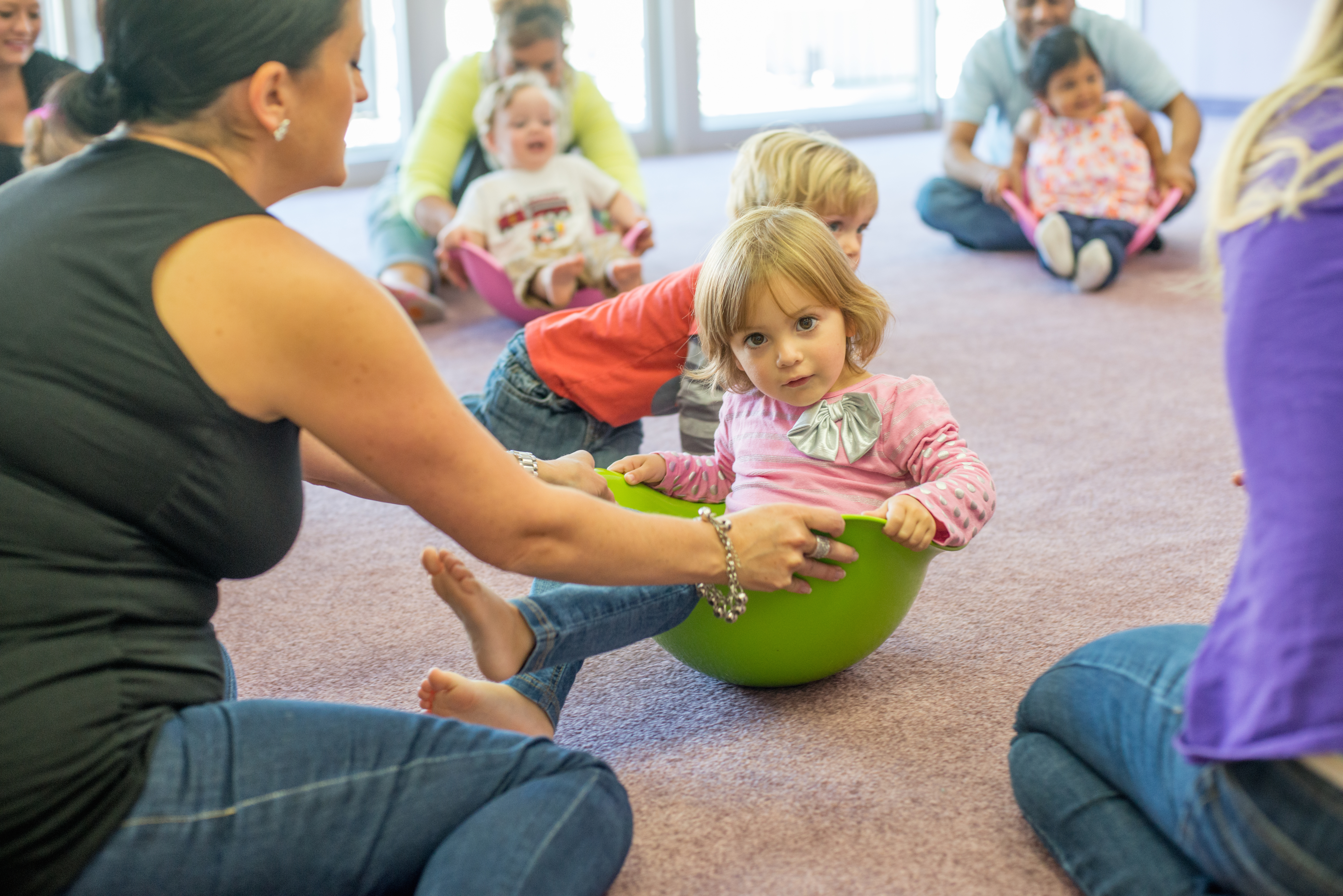
Kathy’s Kindermusik
by Theresa Case, M.Ed., Director of Piano Central Studios, Greenville, SC
At Kindermusik, we support the wonder and uniqueness of each child, and we’re really proud of the way that the Kindermusik curricula embrace all learning styles. But we also recognize that it us up to the teacher and the parent to identify – and celebrate! – the wonderful variety of learning styles that are in each class. Understanding a little more about the main categories of learners helps set the right expectations for each child and gives inspiration for ways to interact.
The Visual Learner (The Looker)
The visual learner learns best by “seeing” information. He will tend to watch an activity several times before he feels comfortable and safe enough to participate in the activity. This type of learner is taking in so much information by watching all of the other children, hearing the music, and moving quickly from activity to activity, that he tends to watch what’s going on more than he actually participates. Because the visual learner learns well by observing, he has good spatial sense and a good sense of direction. It may look like he’s daydreaming in class, but more often than not, the visual learner is absorbing much more than we realize.
The Kinesthetic Learner (The Mover)
The kinesthetic learner wants – and needs! – to move, touch, feel, and physically explore. He can be highly active because he learns best through physical manipulation and movement, activating both small and large muscles as he learns. He likes to “show you” rather than tell you, and he will communicate through body language and gestures. The kinesthetic learner is well-coordinated, has a strong sense of timing, and works well with his hands. This learner often inspires the curiosity and participation of others because he himself is a performer and a participant. Although the kinesthetic learner is very active, he is learning a great deal through his physical activity and “hands-on” approach.
The Auditory Learner (The Listener)
The auditory learner perceives his world through sounds. While the auditory learner often listens attentively when something is new or interesting, he may act “bored” if the information is familiar. Sometimes the auditory learner is easily distracted, and it can be hard for him not to interrupt because he likes to talk too! This learner responds well to verbal prompts like, “Are you listening?” The auditory learner usually remembers details and information very actively when that information has been explained to him orally. These learners typically have strong language and communication skills supported by a well-developed vocabulary.
Our best advice? Think of your child as a string. If you push it, it bunches up. If you guide it along, it moves beautifully. So accept your child as he is, and work with him to make the most of his abilities as they relate to his learning style.
Specifically in Kindermusik class, understand that the first 6 – 8 weeks of class is the discovery stage. Allow your child to explore, making the most of their own learning style. After these first several weeks, you will witness the “magic” begin to happen. The children will be more focused, will socialize more with others, and will very likely participate more fully in the activities in class and at home. As the children soak in the information and learning during class, they will take it all home with them where they are usually more comfortable in participating. This is one of the main reasons why reinforcement and involvement at home with your At Home Materials is critical part of a positive classroom ingredient.
In Summary… Learning style can be observed early because learning style is inborn and inherited, but learning styles may change or strengthen as the child develops. There may be one dominant learning style that is easily identifiable, or your child may use a mixture of learning styles as he adapts to different environments. The key is to identify, and then be willing to re-assess, which learning style is most prevalent in your child. Understand-ing more about learning styles helps you reduce frustration and know better how to maximize your child’s learning, helping him succeed in Kindermusik class, in the school room, and in life.
For more information on learning styles, see “The Way They Learn” by Cynthia Tobias.
1 www.applest.com

Leave a Reply